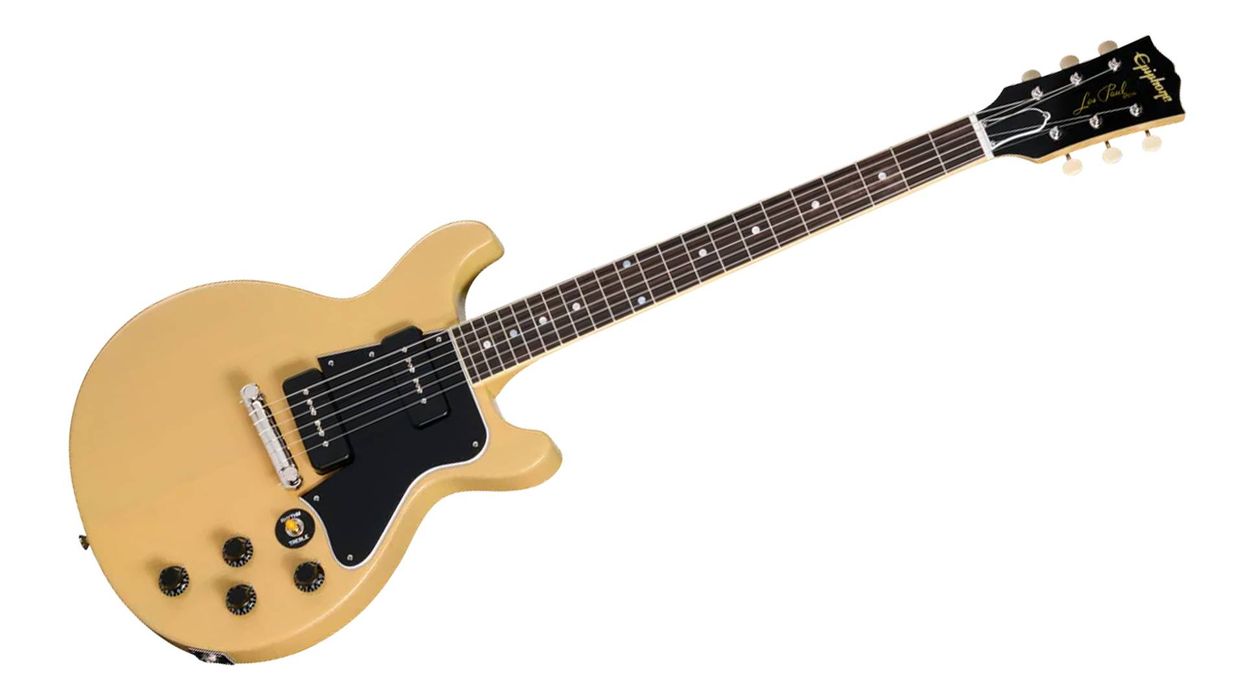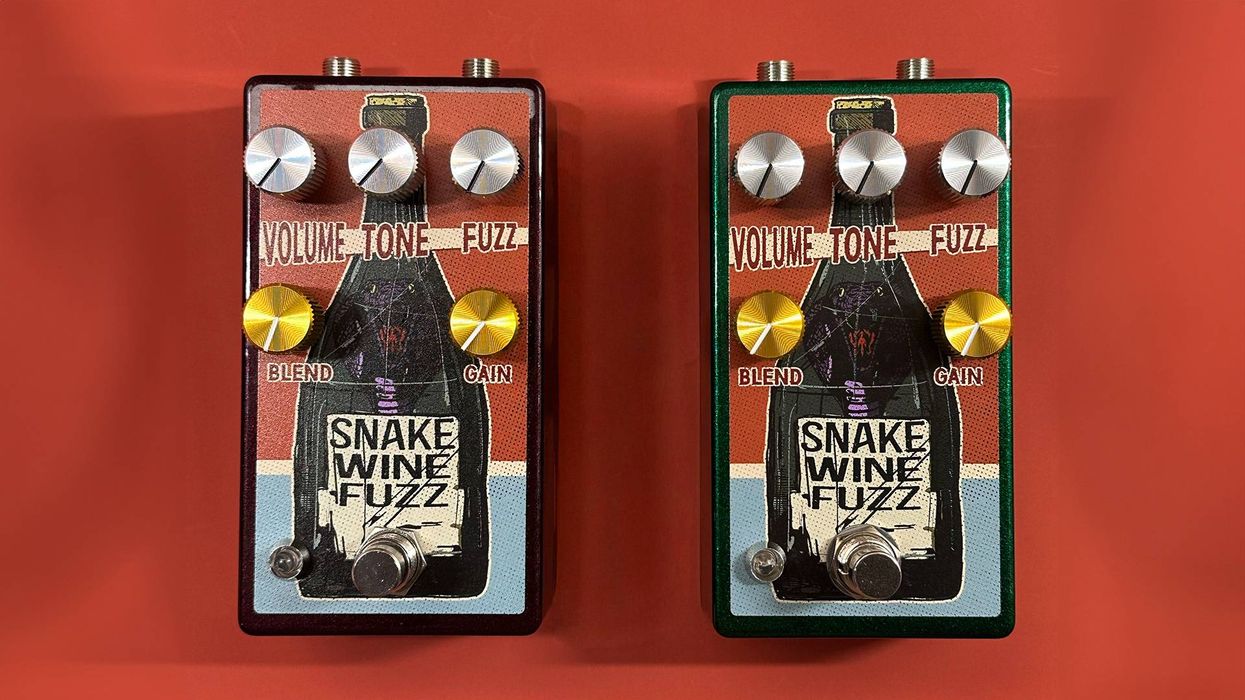Here at the laboratory, we’ve been having
some deep discussions about "fast response"
types of guitar amplifiers. At the end of last
month’s column about my first meeting with
Alexander Dumble, I promised we’d take a
closer look at this very concept of "fast" and "slow" amplifiers, so let’s dig in.
Frankly, I think this concept began with the
original Vox AC30. If you ever get the chance
to play a real AC30, you will notice right from
the very first notes played through those
lovely sounding, original 15-watt Celestion "Blue" speakers that there is something very
special going on. At first, the notes seem to
pop from the speakers in a way that’s almost
psychic—it’s as if the notes come out before
you actually play them. One of the sweet
spots found in the AC30 is when the amplifier
is set precisely to where the notes or chords
start to distort when you strike the strings a
bit harder. The intro riff to the Foo Fighters’
song "Summer’s End" (on 2007’s Echoes,
Silence, Patience & Grace) is a great example
of this incredible sound.
Most of you understand what tube
compression is and how a tube amplifier
reacts when you play a guitar through it, but
an AC30 has several other factors that make
it sound unique when compared to other
amplifiers. For starters, there’s the extremely
high efficiency of the original speakers.
Their sensitivity is a whopping 103 decibels.
Compare that to the mere 96 dB rating of
many other speakers, such as a Celestion
Greenback. This difference becomes very
clear when you hear the two speakers driven
by the same amplifier. When comparing
the two speaker models side by side, the
Greenback’s 96 dB sensitivity rating seems
downright paltry. In fact, the 103 dB rating of
the original Celestion G12-M makes it almost
twice as loud as the Greenback.
The combination of those highly efficient
speakers, coupled with the EL84’s sweetly
compressed, overdriven signal being sent
through the larger AC30 cabinet gives you
a perception of a much louder amplifier
than its rated 33 watts of peak music power.
Standing in front of an AC30 that’s set to its
halfway point sounds more like hanging with
a 50-watt amp—easily!
Additionally, the sheer physical size of the
AC30’s cabinet produces an effect that sounds
very much like "natural reverb." This is another
sonic trademark of this particular guitar amp—
it has a bouncy, springy feel. The AC30 is a ton
of fun to play because it’s so lively.
The AC30 holds another surprise, hidden in
the circuit schematic itself. This amplifier has
a huge choke that is much bigger than that
of most other guitar amps. For example, a
Fender Bandmaster—a 40-watt amplifier—
has a 90-milliamp, 4 Henry choke (Henry
is a measurement of inductance). Another
example is found in the Marshall JTM45.
This amp sports a 150-milliamp, 5 or 7 Henry
rated choke. In contrast, the AC30 wields an
absolutely oversized choke that weighs in at
100 milliamps and 20 Henrys—gigantic for a
conservatively rated 30-watt amp.
A choke, for those not familiar with the term,
is an inductor—in this case a coil of wire spun
around a laminated ferrous metal core—that
sets up an electromagnetic field when current is
passed through it. According to the Radiotron
Designer’s Handbook [4th edition, 1952], when
the current is varied, voltage is induced in the
coil. In essence, the choke stores electrical
energy as an electromagnetic field and gives up
energy when the current going through it starts
to sag. This means the choke has a large effect
on an amplifier’s dynamics.
Here’s an important point about fast
amplifiers: One thing common to most models
we’ll be discussing in this and future columns
is that fast-type amplifiers have raised voltages
in the power supply. This gives these types of
amps the ability to get more reserve power
quickly when they need it. This translates to
an amp that will feel a bit "stiff" when you first
dig into the strings with your pick.
Furthermore, when talking about fast or slow
types of amplifiers, it is worth mentioning
that the perception of these fast dynamics
(or the opposite "slow" dynamic effect) may
be due to a lot of parameters. However, the
power supply and output circuitry need the
ability to deliver their power quickly, and the
speakers must be able to reproduce these
dynamic peaks accurately.
Interestingly, the AC30’s fast response is
also a bit of a paradox. AC30s use a GZ34
rectifier tube, which is not as fast as some
guitar amplifiers produced just a few years
later. Hiwatts are a great example of fast
response amps that use a solid-state rectifier
in place of the slower GZ34 tube rectifier.
Original Vox AC30s also actually possess
lower overall power supply voltages, but the
EL84 output tubes require different operating
parameters than the octal tubes in the other
amps I mentioned a moment ago.
That’s a lot of information for this month, but
to summarize simply, the power supply, output
circuitry, and speaker choices are indeed the
crux of the biscuit! Many thanks to my dear
friend Bjorn "Mad Professor" Juhl and my
personal amp technician, Charles "Grumpy"
Lyons, for their wonderful contributions to this
discussion. We’re only getting warmed up, so
see you next month.
Dean Farley
Dean Farley is the chief designer of "Snake Oil Brand Strings"
(snakeoilstrings.com) and has had a profound influence
on the trends in the strings of today.
Search
Latest Stories
Start your day right!
Get latest updates and insights delivered to your inbox.
Premier Guitar features affiliate links to help support our content. We may earn a commission on any affiliated purchases.
The Latest
More for you
Most Popular
Don’t Miss Out
Get the latest updates and insights delivered to your inbox.
Load More









![Rig Rundown: AFI [2025]](https://www.premierguitar.com/media-library/youtube.jpg?id=62064741&width=1245&height=700&quality=70&coordinates=0%2C0%2C0%2C0)





